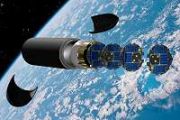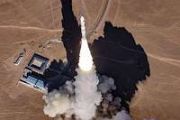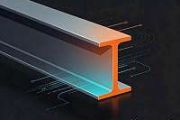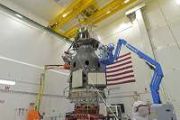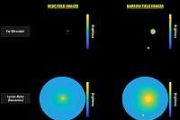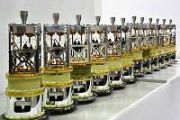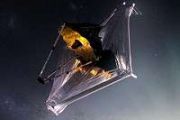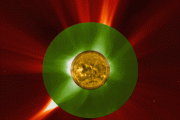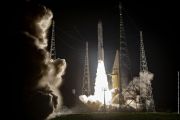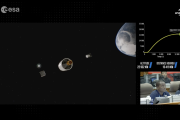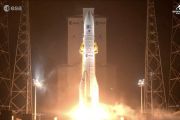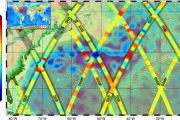
Copernical Team
China's commercial CERES-1 Y7 rocket launches 7 satellites
 China on Thursday launched the CERES-1 Y7 carrier rocket from the Jiuquan Satellite Launch Center in northwest China, sending seven satellites into a planned orbit.
The commercial rocket blasted off at 12:03 p.m. (Beijing Time) from the launch site, carrying seven satellites, including the Xiguang-1 01 satellite.
Xiguang-1 01, equipped with hyperspectral, infrared, and panchromatic c
China on Thursday launched the CERES-1 Y7 carrier rocket from the Jiuquan Satellite Launch Center in northwest China, sending seven satellites into a planned orbit.
The commercial rocket blasted off at 12:03 p.m. (Beijing Time) from the launch site, carrying seven satellites, including the Xiguang-1 01 satellite.
Xiguang-1 01, equipped with hyperspectral, infrared, and panchromatic c ICEYE US receives first NASA commercial smallsat data task order
 ICEYE US Inc, renowned for its persistent Earth monitoring through radar imaging satellites, has secured its inaugural Task Order as a part of a previously announced Blanket Purchase Agreement (BPA) with NASA. This accord grants NASA the capacity to procure and assess ICEYE's synthetic-aperture radar (SAR) data. This evaluation is intended to serve the scientific and academic spheres, assisting
ICEYE US Inc, renowned for its persistent Earth monitoring through radar imaging satellites, has secured its inaugural Task Order as a part of a previously announced Blanket Purchase Agreement (BPA) with NASA. This accord grants NASA the capacity to procure and assess ICEYE's synthetic-aperture radar (SAR) data. This evaluation is intended to serve the scientific and academic spheres, assisting RTX and Blue Canyon unveil new high-capacity XB16 CubeSat
 In response to the ever-growing demand in the satellite industry for greater payload size, weight, and power (SWaP), RTX's satellite manufacturer arm, Blue Canyon Technologies (BCT), has recently unveiled the XB16 CubeSat. This new offering stands as the most sizable form factor within its current CubeSat product portfolio.
The XB16 CubeSat is a testament to the technological strides the i
In response to the ever-growing demand in the satellite industry for greater payload size, weight, and power (SWaP), RTX's satellite manufacturer arm, Blue Canyon Technologies (BCT), has recently unveiled the XB16 CubeSat. This new offering stands as the most sizable form factor within its current CubeSat product portfolio.
The XB16 CubeSat is a testament to the technological strides the i De-orbiting PS4 stage in PSLV-C56 Mission
 The Indian Space Research Organisation (ISRO) accomplished a milestone in its latest mission PSLV-C56. Not only did the PSLV-C56 vehicle precisely place the DS-SAR satellite and six accompanying satellites into a 536 km circular Low Earth Orbit (LEO) with a 5-degree inclination, but it also took commendable steps in addressing the rising concern of space debris.
Within 20 minutes of lift-o
The Indian Space Research Organisation (ISRO) accomplished a milestone in its latest mission PSLV-C56. Not only did the PSLV-C56 vehicle precisely place the DS-SAR satellite and six accompanying satellites into a 536 km circular Low Earth Orbit (LEO) with a 5-degree inclination, but it also took commendable steps in addressing the rising concern of space debris.
Within 20 minutes of lift-o Airgain expands line of ultra-low-profile RECON13 5G rugged antenna
 Airgain, Inc. (NASDAQ: AIRG), a provider of wireless connectivity solutions globally, has introduced the RECON13 5G antenna, adding to its line of rugged outdoor 5G antennas. The RECON13 is specifically tailored for fleet and public safety vehicles, marking Airgain's latest venture into ultra-low-profile antennas intended for applications needing optimal connectivity in compact spaces.
The
Airgain, Inc. (NASDAQ: AIRG), a provider of wireless connectivity solutions globally, has introduced the RECON13 5G antenna, adding to its line of rugged outdoor 5G antennas. The RECON13 is specifically tailored for fleet and public safety vehicles, marking Airgain's latest venture into ultra-low-profile antennas intended for applications needing optimal connectivity in compact spaces.
The USTC scientists discover quasar-induced superbubbles
 In groundbreaking research led by Prof. LIU Guilin and Prof. HE Zhicheng of the University of Science and Technology of China (USTC) under the aegis of the Chinese Academy of Sciences (CAS), the existence of superbubble pairs instigated by quasar-induced outflows in three red quasars has been confirmed. This revolutionary study has been unveiled in the journal Science Advances.
A prevailin
In groundbreaking research led by Prof. LIU Guilin and Prof. HE Zhicheng of the University of Science and Technology of China (USTC) under the aegis of the Chinese Academy of Sciences (CAS), the existence of superbubble pairs instigated by quasar-induced outflows in three red quasars has been confirmed. This revolutionary study has been unveiled in the journal Science Advances.
A prevailin Pulsar Fusion forms partnership with University of Michigan for electric propulsion
 Electric propulsion, with a specific focus on Hall effect thrusters, has long been recognized as a foundational technology for space missions. Recognizing its potential, the UK Space Agency has recently announced a collaboration with the Plasma dynamics and Electric Propulsion Lab at the University of Michigan, one of the premier Hall thruster research centres worldwide.
This international
Electric propulsion, with a specific focus on Hall effect thrusters, has long been recognized as a foundational technology for space missions. Recognizing its potential, the UK Space Agency has recently announced a collaboration with the Plasma dynamics and Electric Propulsion Lab at the University of Michigan, one of the premier Hall thruster research centres worldwide.
This international Mars exploration reveals evidence of life-conducive environment
 Mars, often dubbed the 'Red Planet', has long been a focal point for scientists in the quest to uncover extraterrestrial life. Unlike Earth, Mars' surface is not subjected to the perpetual shifting and renewing influences of plate tectonics. This lack of tectonic activity has bequeathed Mars with expanses of land showcasing remnants of fossil rivers and lakes that date back billions of years.
Mars, often dubbed the 'Red Planet', has long been a focal point for scientists in the quest to uncover extraterrestrial life. Unlike Earth, Mars' surface is not subjected to the perpetual shifting and renewing influences of plate tectonics. This lack of tectonic activity has bequeathed Mars with expanses of land showcasing remnants of fossil rivers and lakes that date back billions of years. GAO affirms NASA's decision on Intuitive Machines' $719M lunar contract
 In a recent move, the U.S. Government Accountability Office (GAO) has corroborated NASA's evaluation of the OMES III proposals, which subsequently resulted in a significant award to Intuitive Machines. The nod from GAO further reinforces the confidence in the selection process.
The contract, a hefty five-year deal valued at up to $719 million, was awarded to Space and Technology Solutions.
In a recent move, the U.S. Government Accountability Office (GAO) has corroborated NASA's evaluation of the OMES III proposals, which subsequently resulted in a significant award to Intuitive Machines. The nod from GAO further reinforces the confidence in the selection process.
The contract, a hefty five-year deal valued at up to $719 million, was awarded to Space and Technology Solutions. Week in images: 07-11 August 2023
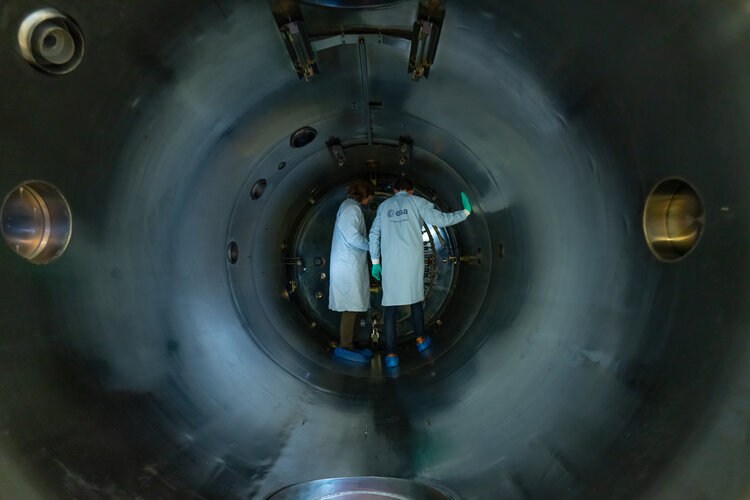
Week in images: 07-11 August 2023
Discover our week through the lens




